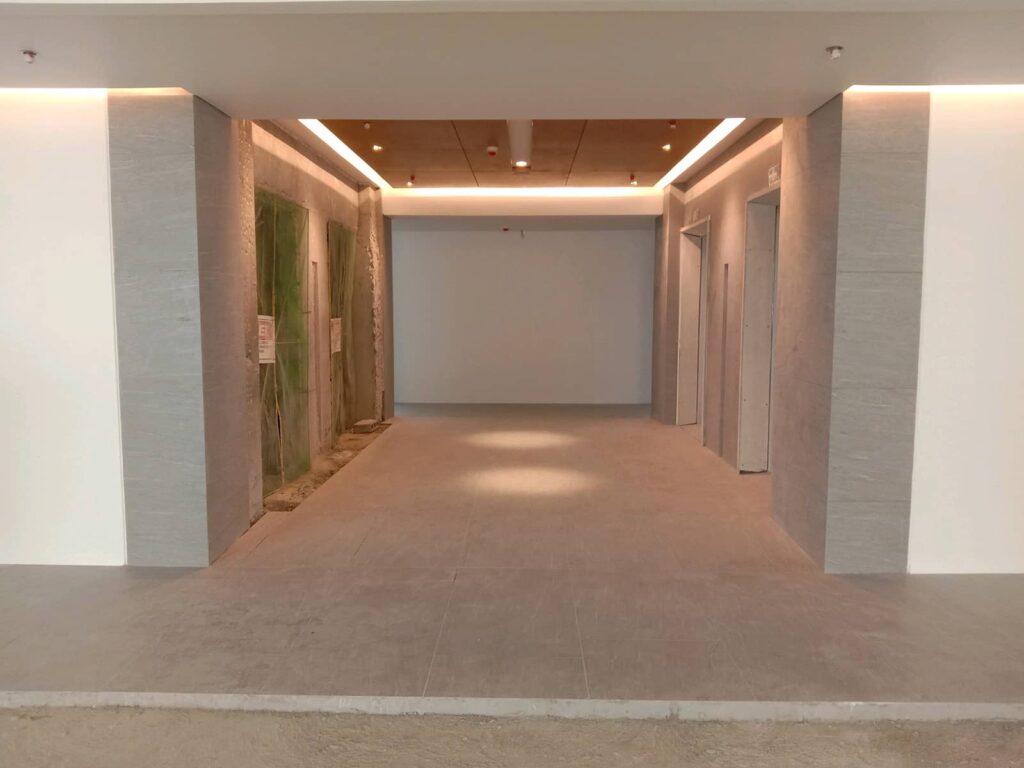JEG Tower @ One Acacia nears its completion and launch this 2021. Amid the pandemic, JEG Development Corporation (JDC) is working hard to deliver Cebu City’s newest premium green building to add to the region’s portfolio of sustainable developments.
The tower’s showroom on the 7th floor is also now open to accommodate interested tenants who want to locate in this award-winning green and pandemic-proof commercial establishment. The showroom is a sample retail unit on the lower floors of the building. Whole floor office cuts are also available for viewing.
As a culmination of Cebuano heritage and pride, JDC aims to highlight the following through its first high-rise commercial development:
Delivering The Best, Safest Workplace
This 22-storey, Grade A commercial development was named 2020’s Best Commercial Green Development at the 8th Property Guru Philippine Property Awards. Apart from being last year’s country winner, it is also shortlisted as the Philippines’ Best Office Development. With its future-proof and sophisticated features, JEG Tower offers one of the best business addresses within the Cebu Central Business District.
With the threats of the COVID-19 pandemic, JEG Tower has pivoted to adapt to the needs of a post-pandemic workforce. It utilizes top-grade technology to offer the best working environment to its tenants such as MERV-13 air filters, Fresh Air system for optimal indoor air quality, contactless fixtures, and provisions for additional sanitation and disinfection areas.
Standalone temperature checking stations are also placed in the main entry points of the estate to ensure the fitness of all tenants and visitors. Automatic sliding doors are also installed for a touchless access to the building.
JEG Tower @ One Acacia has also equipped the building with Destination Oriented Allocation System elevators as part of their contact tracing efforts and crowd management. It goes beyond just providing the most premium amenities but guarantees the safety of its occupants.
READ MORE: JEG Tower @ One Acacia wins Best Commercial Green Development


Showcasing Sustainability
As one of the few LEED-certified developments in the Visayan region, JEG Tower goes beyond being one of the frontrunners of sustainability and sophistication. Built with green materials and sustainable construction methods, JEG Tower @ One Acacia is characterized by its energy-efficient features, reduced water usage, and efficient waste management facilities. The tower is also remarkable with its unique garden rooftop that serves as a landmark in the Cebu City Skyline.
RELATED: JEG Tower Focus – Additional Safety Features for Disease Prevention
Showcasing Homegrown Talent
JEG Tower @ One Acacia has highlighted the skills and expertise of homegrown businesses and industries. Aside from pushing for sustainability, JDC also aims to support fellow local players in the industry. The company has collaborated with local suppliers, consultants, vendors in completing construction. In the process, JDC has become a partner for these businesses’ growth.
The 7th floor showroom also features pieces from Cebu-based furniture and design companies that were carefully curated to complement the building’s sophisticated design. Some of the furniture and decorative pieces in JEG Tower’s showroom also highlight Cebu’s rich heritage and culture.

Showcasing Cebu
Office tenants can also enjoy Cebu City’s views from their workstations provided by the large windows available in each unit. Larger windows are more ideal in a workplace environment as it allows maximum natural lighting for the employees’ comfort and health. Numerous studies have found that exposure to daylight and access to natural views improve employees’ moods and boost their morale.
More than its tourism and heritage, Cebu is also the Visayan Region’s economic center with its bustling central business districts: Cebu Business Park and Cebu IT Park. Located along the city’s main thoroughfare, JEG Tower captures the market from both business districts.
With its ideal location, world-class green features, and top-grade amenities, JEG Tower @ One Acacia is the best option for companies looking for office and retail spaces in Cebu City.
Schedule a tour of our showroom today! Contact Lorenzo Rodriguez at (+63) 917-825-6884 or send an email to lorenzo.rodriguez@kmcmaggroup.com.


































